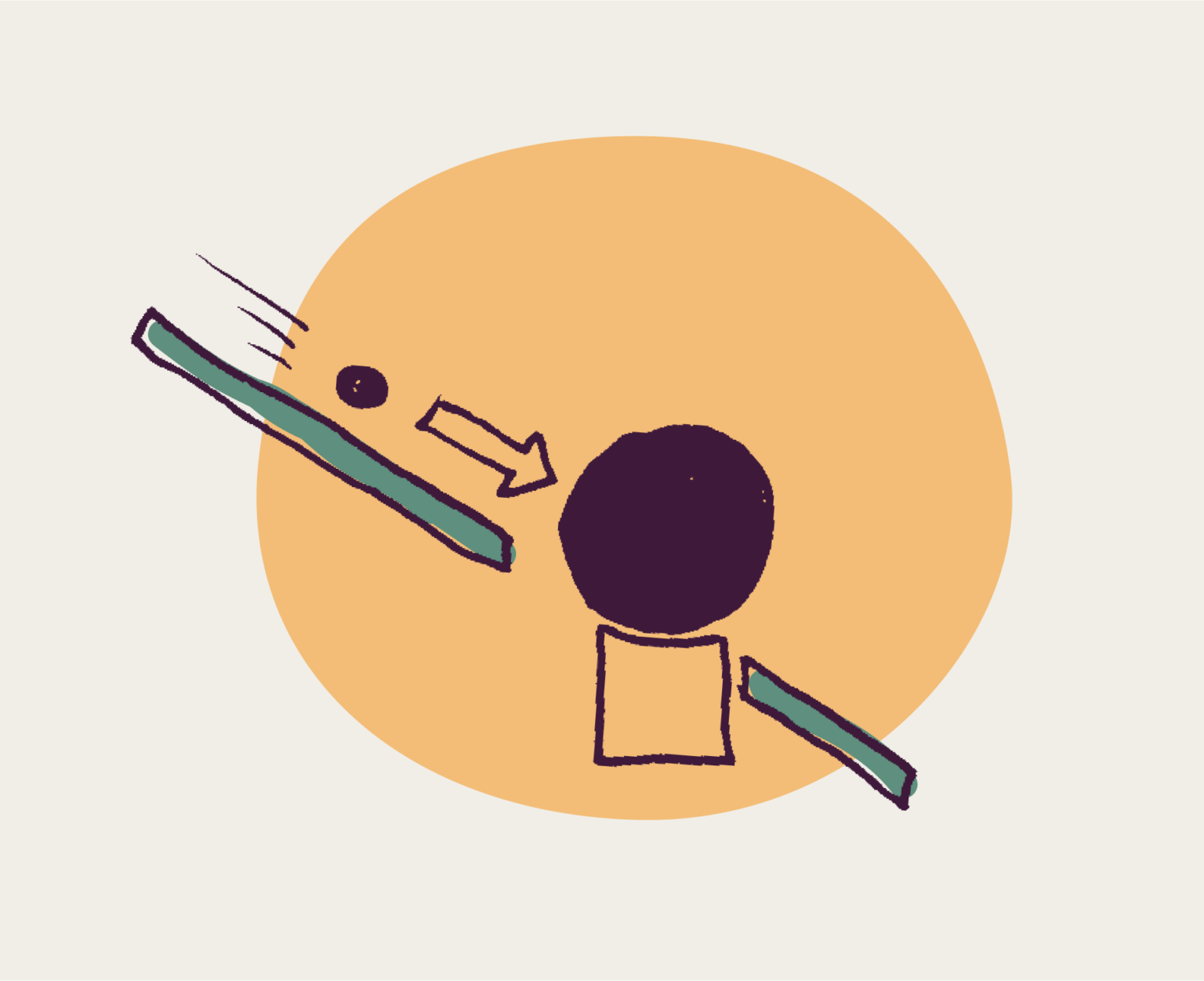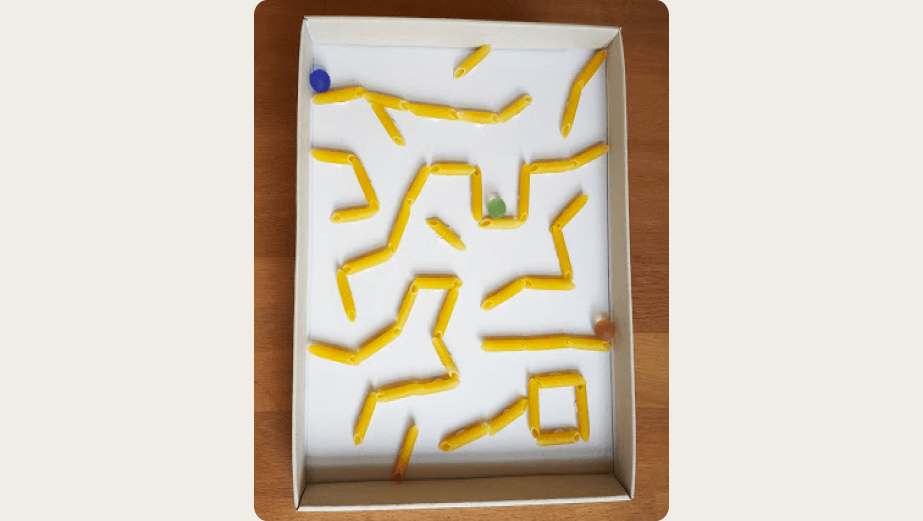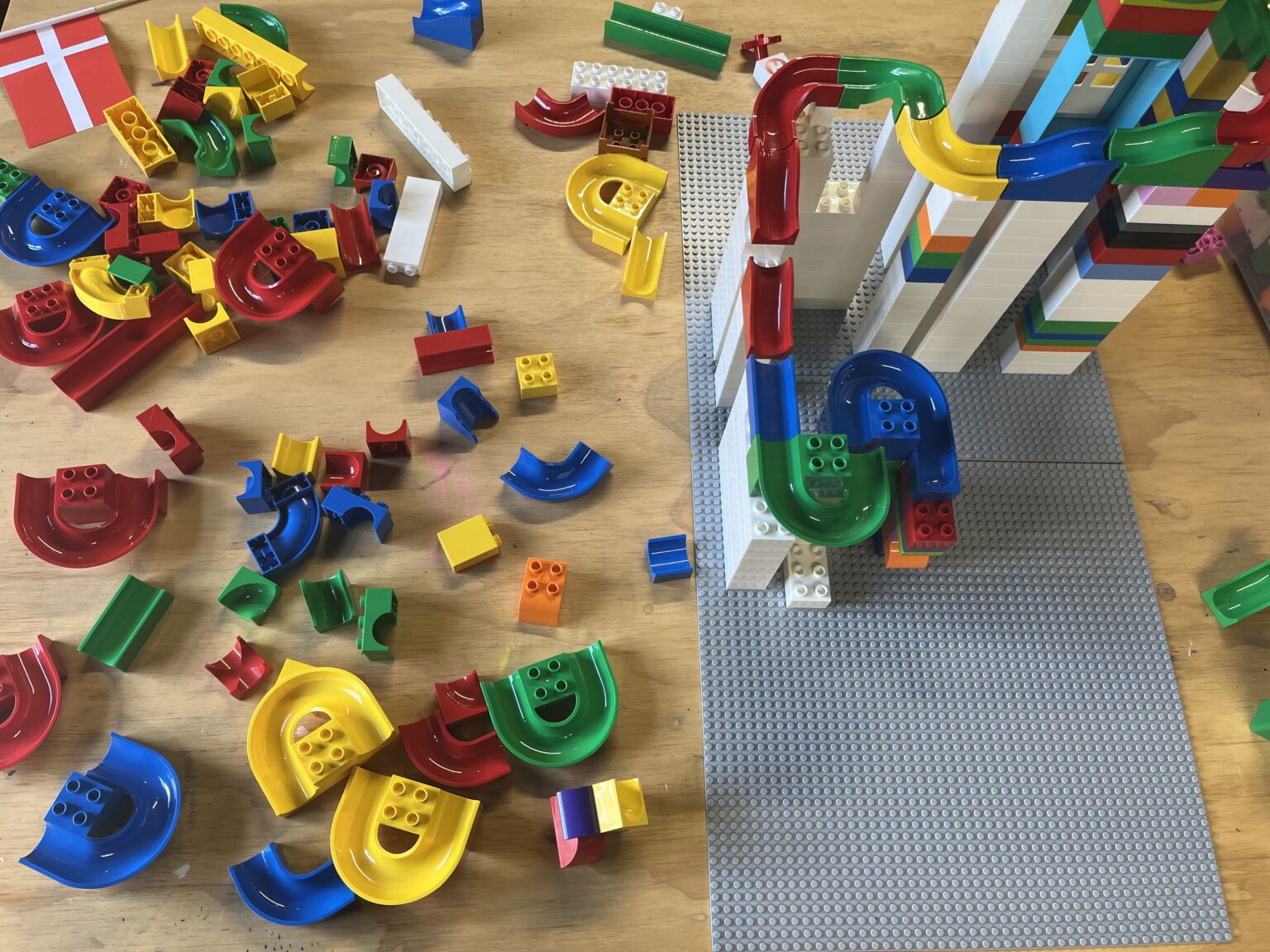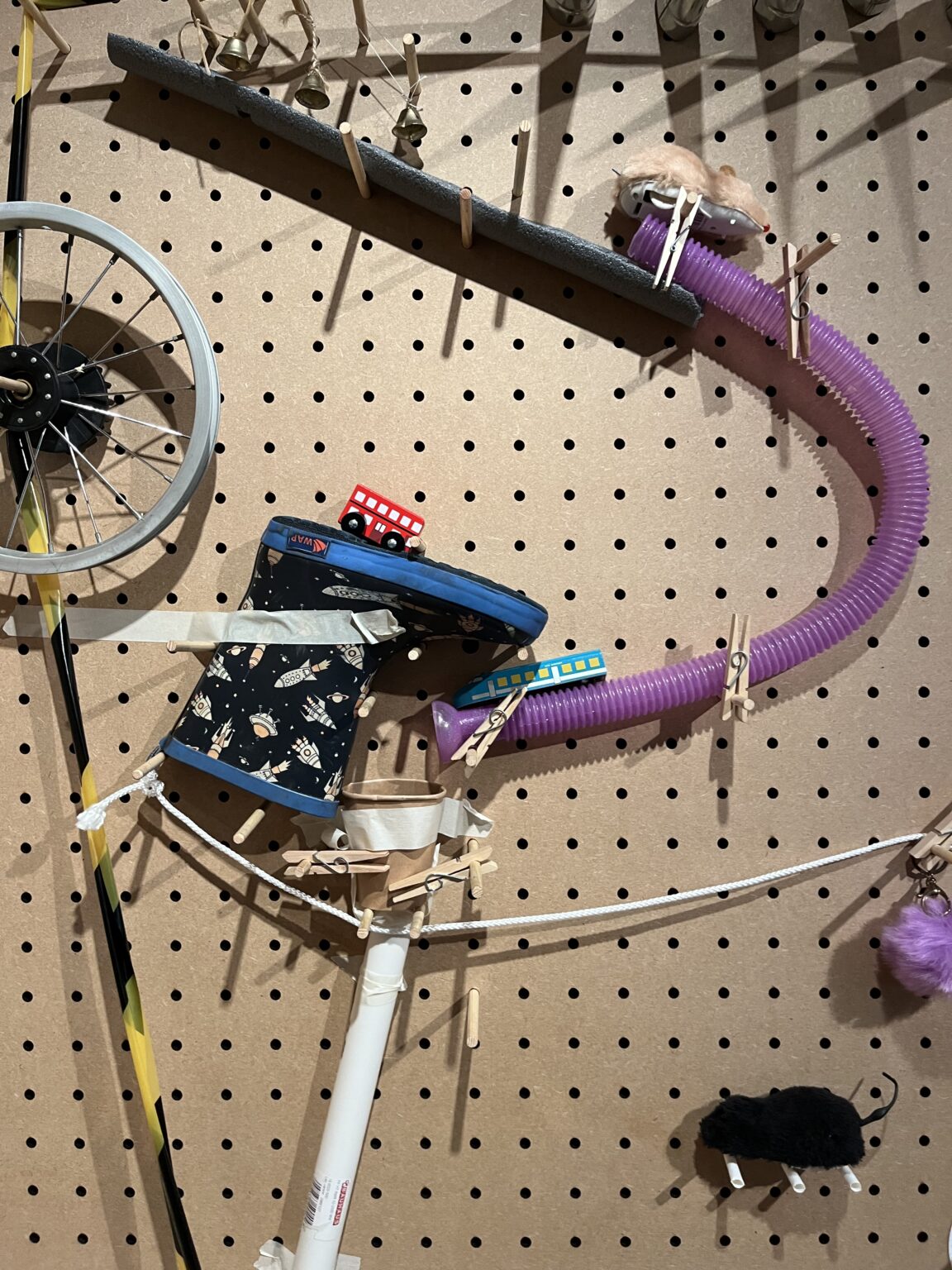Parallel – A marble run with two marbles
We build a marble run where a small marble makes a bigger marble run.

Procedure
Framework
Framework
We create a framework that quickly makes the children start building the marble run and exploring and trying out the materials.
For example, we can say: “Today, we build a marble run where there are two marbles on the track. That is because we try to build a track where a small marble makes a bigger one run. How do you think we solve that challenge?”
Time
The activity can be adapted to the framework of one lesson and varied according to the time available and the children’s prerequisites.
Materials
We can use all materials we make available for building the marble run, for example wooden rails, polystyrene, cardboard, straws, toilet rolls, rubber pipes, tape, teddies, etc.
During the activity
During the play session, the children encounter challenges and successes, where we can stop and help spot what is difficult or what is going well. We can do this in several ways:
Reflection routines
When we get the opportunity to reflect together with the children on what challenges or discoveries arise along the way, we can use one or more reflection routines. It could be, for example, a learning metaphor with a social strategy that we practice, an emoji that describes the feeling we have right now, or a rating of how well we think the building is going. In this way, a reflection routine can help to show and put into words the experiences that the children have during the play session.
Facilitating questions
We can ask facilitating questions to the children along the way, as they naturally arise in the building process. In this way, we facilitate the play session so that we continue the play and at the same time learn something from it. For example:
- I see that you have stopped building. I wonder how we can continue building the marble run from here?
- I see that you have encountered a challenge. Should we try to solve it together?
- Try to notice what you are doing right now. Do you think this is a collaborative strategy?
A new challenge
We assess whether the children find it motivating and meaningful with a new challenge during the activity. Maybe the activity starts to get boring, and then it makes sense to present a new challenge.
In the list below, inspiration for other challenges can be found. The list contains challenges that are good to introduce during the activity or others that are good to start with in a new activity.
Tell and Show
Finally, in the play session, we give a Tell and Show of our marble run, so that we have the opportunity to share our experiences, reflections, and feelings about the construction process.
1. The invisible marble
We first tell about our marble run and the process of building it. We show with our finger as the “invisible marble” how the track runs.
2. Reflection on the process
During the Tell and Show, we can use reflection routines and reflective questions to support the discoveries that have been made. For example:
- What went well?
- What was difficult?
- Is there anything that you want to do differently the next time we build a marble run?
3. We try out the marble run
Finally, we have three tries to get the marble through the marble run. Maybe it doesn’t work out every time, but we can also learn something from that. A marble run is not always completely stable.





